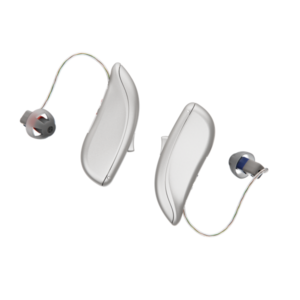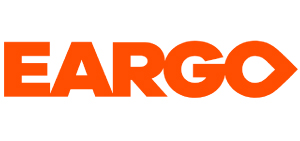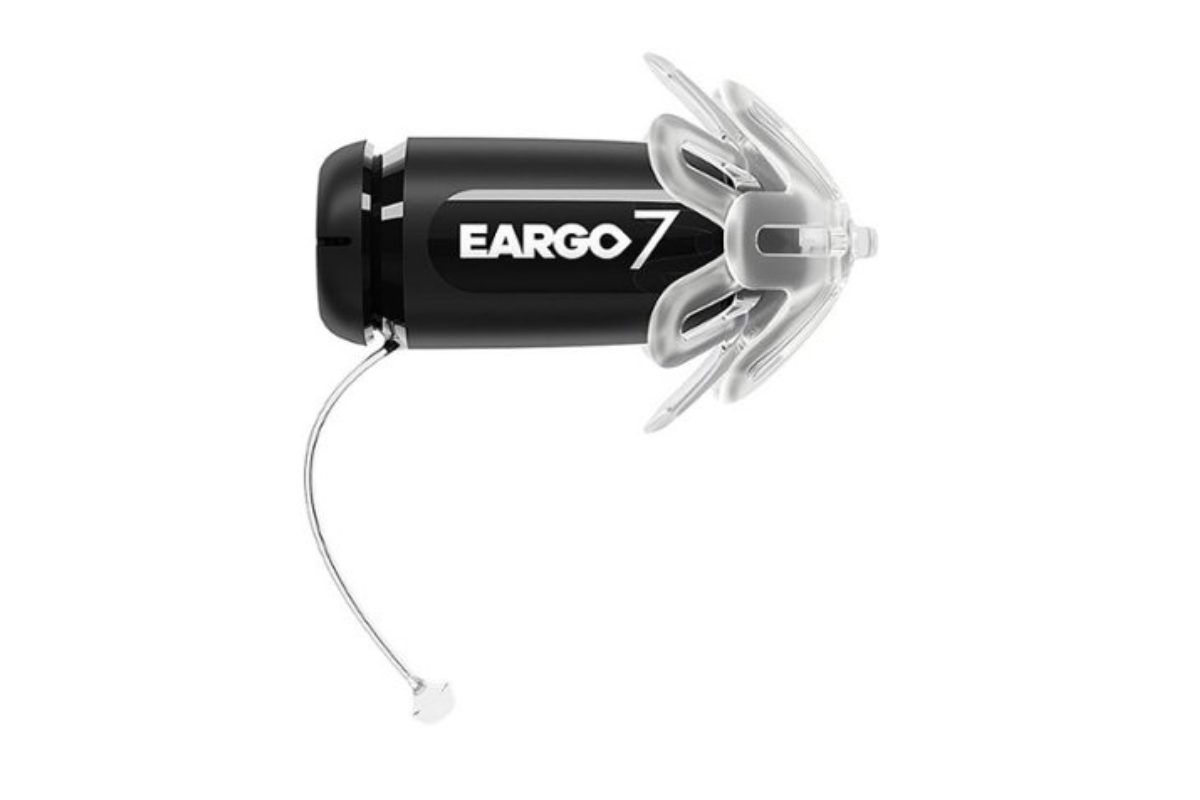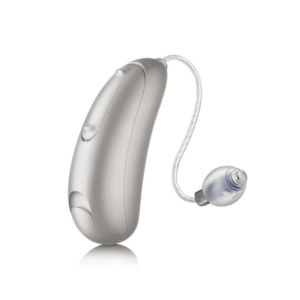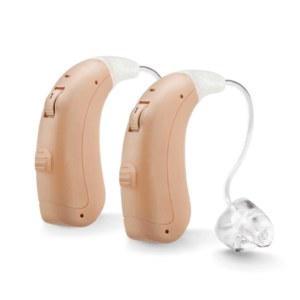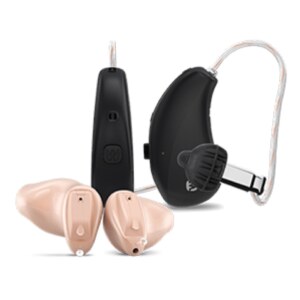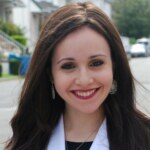The 5 Best Rechargeable Hearing Aids of 2023
AgingInPlace.org keeps our resources free by working as an affiliate partner with some companies mentioned on our site. These partnerships or the commission we may earn do not affect our opinions or evaluations of the products we mention. Our reviews are solely based on our research methodology and from input from our AgingInPlace.org Advisory Board. Learn more about our ad policies.
The 5 Best Rechargeable Hearing Aids of 2023
Products carousel
Hearing aid technology has come a long way since it was first introduced to the market more than a century ago. Rechargeable hearing aids are capable of holding a full day’s worth of charge and entered the market in 2016.
These rechargeable models continue to grow in popularity. One reason they are preferred is because users don’t have to handle tiny batteries like they do with hearing aids that use disposable batteries.
Rechargeable hearing aids create less waste in landfills, can save money in disposable battery costs, and are more practical for older adults with less precise fine motor skills, who may find disposable batteries difficult to change. Thanks to their growing popularity, there are many rechargeable models to choose from. To make your search a little easier, we’ve narrowed down our list to the top five choices for best rechargeable hearing aids.
Our Top Picks for Best Rechargeable Hearing Aids
- Best All-Around: Jabra Enhance Select 200
- Best Invisible: Eargo 7
- Best Rechargeable with a Membership Plan: Audicus Omni
- Most Affordable: MDHearing VOLT MAX
- Best Rechargeable for Severe Hearing Loss: Widex MOMENT
Why Trust Our Expert Review?
Our experts research and recommend products that can help give you a better quality of life. Using our high standards and rigorous testing methodology, we’ve spent more than 4,000 hours, collectively, researching the best hearing aids to help you find the device that’s right for you. Throughout our research process, we did the following:
- Consulted with audiologists and geriatric care experts
- Mystery shopped the brands
- Surveyed hundreds of hearing aid users
- Tested various models of hearing aids
- Interviewed experts in the field
- Read thousands of verified customer reviews
Compare Rechargeable Hearing Aids
| Cost per pair | Style | Treated hearing loss level | Battery life | Quick Charge Option | Trial period | Warranty | |
|---|---|---|---|---|---|---|---|
| Jabra Enhance Select 200 | $1,995 | Receiver-in-canal (RIC) | Mild to moderate | 30 hours | 100 days | 3 years | |
| Eargo 7 | $2,950 | Invisible | Mild to moderate | 16 hours | 45 days | 2 years | |
| Audicus Omni | $2,998 | Receiver-in-canal (RIC) | Mild to moderately severe | 16 hours | 45 days | 2 years | |
| MDHearing VOLT MAX | $699 | Behind-the-ear (BTE) | Mild to moderately severe | 15 hours | 45 days | 2 years | |
| Widex MOMENT | Retailer dependent | BTE, RIC | Mild to profound | BTE 24 hours, RIC 16 hours | 45 days, but can vary by retailer | 3 years, but can vary by retailer |
| Jabra Enhance Select 200 | Cost per pair | $1,995 | Style | Receiver-in-canal (RIC) | Treated hearing loss level | Mild to moderate | Battery life | 30 hours | Quick Charge Option | Trial period | 100 days | Warranty | 3 years |
|---|
| Eargo 7 | Cost per pair | $2,950 | Style | Invisible | Treated hearing loss level | Mild to moderate | Battery life | 16 hours | Quick Charge Option | Trial period | 45 days | Warranty | 2 years |
|---|
| Audicus Omni | Cost per pair | $2,998 | Style | Receiver-in-canal (RIC) | Treated hearing loss level | Mild to moderately severe | Battery life | 16 hours | Quick Charge Option | Trial period | 45 days | Warranty | 2 years |
|---|
| MDHearing VOLT MAX | Cost per pair | $699 | Style | Behind-the-ear (BTE) | Treated hearing loss level | Mild to moderately severe | Battery life | 15 hours | Quick Charge Option | Trial period | 45 days | Warranty | 2 years |
|---|
| Widex MOMENT | Cost per pair | Retailer dependent | Style | BTE, RIC | Treated hearing loss level | Mild to profound | Battery life | BTE 24 hours, RIC 16 hours | Quick Charge Option | Trial period | 45 days, but can vary by retailer | Warranty | 3 years, but can vary by retailer |
|---|
- Price: $1,995 per pair
- Battery life: 30 hours, lithium-ion battery
- Quick-Charge option: Yes
- Bluetooth enabled: Yes
The Jabra Enhance Select 200, which is the rebranded version of the Lively 2 Pro, is a receiver-in-canal hearing aid (RIC) that packs a punch. These hearing aids utilize some high-tech features:
- Bluetooth audio streaming
- Hands-free phone calls
- Remote adjustments from audiologists
- Telecoil
- Tinnitus management
These features are included with many prescription hearing aids, but the Jabra Enhance hearing aids are less expensive.
Other Jabra Enhance features include automatic adjustment for sound settings based on background noise levels, as well as a music mode that reduces hearing aid whistling when listening to music. Although they can be purchased online, Jabra Enhance hearing aids require a prescription because you have to submit a hearing test and consult with one of the brand´s audiologists online before you can purchase them.
Of the rechargeable hearing aids we tested, the Jabra Enhance Select 200 aids offered one of the longest battery lives at 30 hours on one full charge. During our testing, we also tried the quick charge option, which provides 8 hours of battery life with a 30-minute charge. The Jabra Enhance Select 200 aids come with a portable charger that holds three full charges before you’ll need to recharge the case. We also found in our testing that when the hearing aid batteries run low, they’ll reduce their volume and play a melody every 15 minutes until the battery dies. When removed from their charger, the Enhance Select 200 hearing aids automatically power on, so you don’t have to worry about pressing a button before wearing them. Better still, they have a Smart Start delay, where they won’t function for the first 5 to 10 seconds of turning on, so you won’t hear whistling when trying to place them in your ear.
Pros
-
Longest battery life of all reviewed models
-
Advanced features at a more affordable price
Cons
-
Prescription required
- Price: $2,950 per pair
- Battery life: 16 hours, lithium-ion battery
- Quick-Charge option: No
- Bluetooth enabled: Yes
The Eargo 7, Eargo’s newest over-the-counter (OTC) hearing aid, is one of the few invisible hearing aids to include a rechargeable battery. Because invisible hearing aids are so small (they fit deep inside the ear canal and can’t be seen when worn), they typically can’t fit a rechargeable battery inside their casing. As with its predecessor, the Eargo 6, the newest Eargo 7’s small size, however, limits some of its other features, including Bluetooth. Its Bluetooth connectivity can only be used to connect to a smartphone for changes to hearing aid settings and to receive adjustments from audiologists. The Eargo 7 hearing aids can’t directly stream audio from other devices.
Adaptable Sound Technology: The Eargo 7 has Sound Adjust technology that more automatically and precisely eliminates background noise than Eargo’s earlier models. That’s thanks to the new Clarity Mode, which automatically modifies your sound based on the environment it detects. On the Eargo app, you can complete a hearing test that the Eargo 7 will use to tailor your volume and pitch preferences.
Charging and Battery: The Eargo 7 comes with a portable charger that lasts three days on a full charge. The charger takes four hours to fully charge and the hearing aids about two and a half hours to fully charge. The company, however, recommends charging the hearing aids overnight for best results. The Eargo 7 does not offer a quick-charge option. When the charger or hearing aid battery has 25% or less of its full charge remaining, the Eargo app will notify you to charge the battery. From our testing, despite their small size, we found Eargo 7 hearing aids easy to insert and remove from their charger.
Pros
-
Invisible style with a rechargeable battery
-
Easy OTC purchase process
Cons
-
No quick-charge option
-
No Bluetooth audio streaming feature
- Purchase price: $2,998 per pair
- Rental plan price: $129 monthly fee per pair with a $499 sign-up fee
- Battery life: 16 hours, lithium-ion battery
- Quick-Charge option: No
- Bluetooth enabled: Yes
The Audicus Omni is Audicus’ top-of-the-line hearing aid. Audicus sells OTC hearing aids, but one unique aspect of the brand is that it offers the Audicus Plus Plan, a membership plan that lets you rent hearing aids for 18 months. At the end of the 18 months, you have the option to renew your plan and upgrade to a newer model.
The Audicus Plus Plan also includes:
- Free cleanings
- Unlimited warranty
- Damage protection
- Replacement of lost devices
You’ll have the option to purchase hearing aids if you’re not interested in a membership plan.
Bluetooth audio streaming, hands-free phone calls, remote adjustments, tinnitus masking, and telecoil are included features for the RIC Audicus Omni hearing aids.
The Audicus Omni does not come with a portable charger, but its charger can become portable if you purchase the Power Pack. It’s an external charger battery for $49. With the Power Pack, the Audicus Omni charger stays charged for seven days. The Audicus Omni fully charges in about three hours, but there is no quick-charge option. We learned in testing that the hearing aids will alert you with beeps when the battery has 30 minutes of power remaining.
Pros
-
Regular model upgrades with membership
-
Easy OTC purchase process
Cons
-
Must purchase portable charger separately
-
No quick-charge option
- Price: $699
- Battery life: 15 hours, lithium-ion battery
- Quick-Charge option: No
- Bluetooth enabled: Yes
MDHearing VOLT MAX is our most affordable rechargeable hearing aid on this list. At full price, it’s less expensive than the other rechargeable hearing aids in our lineup, and it’s typically on sale for half the price. That makes the cost $699 per pair when on sale. The VOLT MAX is a basic OTC hearing aid in terms of features. It’s a behind-the-ear (BTE) hearing aid with basic Bluetooth connectivity so you can change its settings through your smartphone and receive remote adjustments from MDHearing’s audiologists.
Of the rechargeable hearing aids we reviewed, the VOLT MAX has the shortest battery life at 15 hours on one charge. It has a fast recharge time of 90 minutes and comes with a portable charger that lasts for three full charges before it needs to be recharged. The VOLT MAX has light indicators to let you know the status of your battery life.
Pros
-
Least expensive in lineup
-
Easy OTC purchase process
Cons
-
No Bluetooth audio streaming
-
Shortest battery life in our lineup
- Price: Retailer dependent
- Battery life: 24 hours for the BTE, 16 hours for the RIC, lithium-ion battery
- Quick-Charge option: Yes
- Bluetooth enabled: Yes
The Widex MOMENT is a prescription hearing aid that requires an audiologist consultation at a hearing aid clinic before purchase. Because it’s a prescription hearing aid, the Widex MOMENT includes high-end technology to treat more severe forms of hearing loss. The hearing aids provide fast sound processing that leads to less distorted sound and more closely resembles natural hearing. The MOMENT comes in two styles that are rechargeable—BTE and RIC—and has Bluetooth audio streaming, hands-free phone calls, remote adjustments, tinnitus masking, and telecoil.
The MOMENT’s battery life differs by hearing aid style. The BTE hearing aid has a battery life of 24 hours and the RIC has a battery life of 16 hours. The MOMENT comes with a portable charger that can fully charge the hearing aids in four hours. There’s also a quick-charge option of four hours of use after a 30-minute charge.
The BTE uses sound and light indicators to signal low battery power. The light indicator will flash red when the battery has four hours remaining. The RIC version makes a sound when the hearing aids have three to four hours of battery life remaining.
Pros
-
Treats profound hearing loss
-
Has a quick-charge option
Cons
-
Requires a prescription
-
More expensive than other hearing aids on the list
How Much Do Rechargeable Hearing Aids Cost?
Many hearing aid brands only sell their higher-end models in a rechargeable version. That’s because these models have better sound technology and more advanced features aside from the battery option. These higher end rechargeable hearing aids are more expensive than disposable-battery models. However, some hearing aid brands offer the same model in a rechargeable or disposable-battery version. In this case, the rechargeable-battery feature alone is still more expensive. For instance, a pair of rechargeable Audicus Omni hearing aids costs $400 more than the same model in the disposable-battery version. Although the upfront cost for rechargeable hearing aids is higher, they may save you money in the long term.
The price of disposable batteries for a pair of hearing aids can range from $60 to $200 per year. Since the average lifespan of hearing aids is around five years whether they use a disposable or rechargeable battery, you could spend anywhere from $300 to $1,000 on disposable batteries over the entire lifespan of the hearing aid.
On the higher-end cost for disposable batteries, hearing aids that use them can actually cost you more than the extra purchase price you pay for rechargeable hearing aids. Overall, rechargeable hearing aids are becoming more common than disposable ones, with many models offering only rechargeable versions. All models in our lineup also have financing options to make them more affordable.
| Disposable-Battery Hearing Aids | Rechargeable Hearing Aids | |
|---|---|---|
| Final cost at the end of a pair of hearing aids’ 5-year lifespan | Base price of a pair of hearing aids plus $300 to $1,000 on the cost of disposable batteries** | On average, $400 more in the base price for a pair of rechargeable hearing aids; no ongoing additional battery costs |
| Final cost at the end of a pair of hearing aids’ 5-year lifespan | Disposable-Battery Hearing Aids | Base price of a pair of hearing aids plus $300 to $1,000 on the cost of disposable batteries** | Rechargeable Hearing Aids | On average, $400 more in the base price for a pair of rechargeable hearing aids; no ongoing additional battery costs |
|---|
**Average cost of a disposable battery ranges from $0.30 to $1.25 and is replaced on average every 3 to 10 days.
Battery Life and Operating Time
Rechargeable hearing aid battery life can differ quite a bit. For instance, the Jabra Enhance Select 200 has a battery life of 30 hours and the MDHearing VOLT MAX has a battery life of only 15 hours. Besides the brand and model, other factors can affect a hearing aid’s battery life, including:
- Hearing loss severity
- Bluetooth audio streaming and how often the feature is used
- Overall age of the hearing aid
If you have more severe hearing loss, your hearing aid will require more advanced technology to improve your hearing, and you may use your hearing aid more often than people with milder hearing loss. This technology, and the more frequent use, can drain the life of your battery faster. Similarly, Bluetooth streaming technology that lets you listen to audio directly in the hearing aids requires a lot of battery power and can shorten battery life when frequently used. As a hearing aid gets older, its charge won’t hold as long. Most rechargeable hearing aids have an average lifespan of five years.
Disposable vs. Rechargeable Hearing Aids
Hearing aids that use disposable batteries typically need their battery replaced every 3 to 10 days, while rechargeable hearing aids may need to be recharged nightly if you use them every day. Rechargeable hearing aids are more convenient because you don’t have to purchase hearing aid batteries, and for older adults especially, you don’t have to deal with the frustration of changing out small batteries from small battery compartments. However, disposable-battery hearing aids may be more practical if you don’t want to spend as much money upfront on the cost of hearing aids, which tends to be higher when purchasing rechargeable pairs.
“Many individuals with severe to profound hearing loss prefer disposable batteries,” said Hadassah Kupfer, Au.D. “They can instantly change a battery on a hearing aid when the power runs out instead of waiting around for them to charge before getting back to hearing.”
Lithium-Ion vs. Silver-Zinc Rechargeable Battery Types
Two battery types, lithium ion and silver zinc, are used in rechargeable hearing aids. Lithium-ion-powered hearing aids are the most common option on the market and silver zinc has been mostly discontinued.
Silver-zinc batteries, also called Z-power batteries, are no longer used in hearing aids, so those replacement batteries are more difficult to find now that lithium-ion batteries are used.
Hearing aids with lithium-ion batteries can last up to five years, and a three- to four-hour charge can provide more than 30 hours of listening time. They do not have a battery door, so you cannot access the lithium-ion battery. When these batteries die, meaning they’re no longer able to hold a charge, you typically have to buy a new pair of hearing aids.
What You Need To Know Before Buying a Rechargeable Hearing Aid
Before buying rechargeable hearing aids, keep the following points in mind:
Battery life: Rechargeable hearing aid batteries have a lifespan of anywhere from one to five years depending on the type of rechargeable battery used (e.g., silver zinc versus lithium ion). All hearing aids in our lineup use a lithium-ion battery that tends to last around five years. Disposable hearing aid batteries last between 3 to 10 days, depending on the hearing aid and its technology, the battery capacity, your hearing loss severity, and how often you use the hearing aid and its features.
Cost: Disposable-battery hearing aids will go through more than 400 batteries in five years, costing anywhere from $300 to $1,000 in batteries in that time. Comparatively, a pair that uses lithium-ion batteries will cost about $400 more in a one-time purchase cost.
Lifestyle: If you have vision or dexterity issues, rechargeable hearing aids may be more convenient because you won’t have to worry about the difficulty of handling small hearing aid batteries when it’s time to change them. Also, if you plan to use hearing aids with Bluetooth to stream audio from your phone, TV, or laptop—a feature that drains battery power faster—rechargeable hearing aids will spare you from having to replace batteries often.
Choosing the Best Rechargeable Hearing Aids
When it comes to selecting the best rechargeable hearing aids for you, you’ll have to weigh the costs against the hearing aid brand, its features, and its battery life. We based our lineup of the top five rechargeable hearing aids on our personal product testing and research gathered from audiologists, geriatric care experts, and verified customer reviews.
From our research, here is our list of what to consider when shopping for a rechargeable hearing aid:
- Price
- Hearing aid style
- Types of hearing loss treated
- Battery life
- Quick-charge options
- Bluetooth compatibility
- Audiologist care
- Comfort and fit
- Warranty
- Customer satisfaction
- Customer service
The hearing aids we reviewed—Jabra Enhance Select 200, Eargo 7, Audicus Omni, MDHearing VOLT MAX and Widex MOMENT—represent a range of rechargeable options with different price points, styles, and features.
Bottom Line
Rechargeable hearing aids are becoming the more popular option, with many models to choose from. We narrowed them down to the top five models from reputable, well-known brands based on our personal product research and testing, brand reputation, costs, features, and battery life. Jabra Enhance Select 200 earned our best all around, Eargo 7 our best rechargeable invisible hearing aid, Audicus Omni our best with a membership option, MDHearing VOLT MAX our most affordable, and Widex MOMENT our best for severe hearing loss.
All of these rechargeable models have Bluetooth connectivity for changing their settings through your smartphone, but only the Jabra Enhance 200, Audicus Omni, and Widex MOMENT can be used like wireless earphones to take hands-free phone calls and stream audio directly into the hearing aids. Most of the hearing aids have around a 16-hour battery life, except for the Jabra Enhance Select 200, which falls at the higher end with a 30-hour battery life. The MDHearing VOLT MAX was at the lower end with a 15-hour battery life.
Only the Jabra Enhance Select 200 and the Widex MOMENT have a quick-charge option that lets you get several hours of use out of a half-hour charge. The Eargo 7 is the only invisible hearing aid. The other four models are behind-the-ear rather than in-the-ear hearing aids. Most either come with, or have the option to, add on a portable charger for convenient charging on the go. Other than the Widex MOMENT, a prescription hearing aid that can treat up to profound hearing loss and whose price is retailer dependent but likely to cost several thousand dollars at a minimum, the hearing aids in our lineup cost under $3,000 per pair.
Frequently Asked Questions
-
Disposable-battery hearing aids are typically less expensive upfront, but they can actually cost more in the long run because of the cost of disposable batteries and the fact that these batteries need to be changed often.
Rechargeable hearing aids may cost several hundred dollars more upfront, but they may be less expensive than disposable-battery hearing aids if you plan to use your hearing aids often, especially to stream audio if they have Bluetooth audio streaming.
-
Rechargeable hearing aids are quite reliable. A single charge can power a full day of use—at least 15 to 30 hours. Depending on the type of rechargeable battery used, the hearing aids themselves can last up to five years before needing to be replaced. Should the rechargeable battery or charger unexpectedly malfunction, your equipment may have a warranty period in which the battery or charger can be replaced for you.
-
The five-minute rule is a way to extend the lifespan of your disposable-battery hearing aids. After removing the plastic tab covering the tiny holes at the top of the battery, wait at least five minutes before placing the batteries into the hearing aid. This enables air to completely activate the battery so it can last up to three days longer.
WRITTEN BY
Alex is a writer and speech-language pathologist, specialized in caring for older adults with communication disorders. She writes health and medicine content, with a focus on hearing aids and medical alert systems for AgingInPlace.org.
View AuthorMEDICALLY REVIEWED BY
Dr. Kupfer is an Audiologist and Hearing Aid Specialist in NYC, where she works with adults and older adults daily. In addition to diagnosing hearing loss, tinnitus and fitting cutting-edge hearing aids in her private practice, she serves as adjunct clinical faculty for the CUNY Audiology Doctoral Program.
View ReviewerDo you want to cite this page? Use our ready-made cite template.

